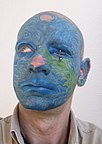1.2. Deviance, Rule Violations, and Criminality
Shanell Sanchez and Kate McLean
The Pittsburgh Parking Chair
Imagine you recently moved to Pittsburgh, from San Francisco, for work after graduating college, and have just rented an apartment on the South Side. When you return home after work, you notice that there is a folding chair blocking a parking space in front of your building. Certain that this practice is illegal, you move the chair onto the sidewalk, and park. As you’re getting out of your car, a neighbor runs out of the building, yelling that she had saved that space for a moving truck.
Which individual is acting in a deviant manner in this situation – you or your neighbor? Should blocking a parking space with a folding chair (or any other large object) be illegal? Why? (Spoiler here: https://www.post-gazette.com/local/east/2017/08/23/pittsburgh-parking-chair-etiquette-squirrel-hill-phillips-avenue/stories/201708230408)
Just about everyone in society has done something that someone else would disagree with and see as deviant. Growing up, my mother and I endlessly “corrected” my Pittsburgh-born stepfather’s pronunciation of various words (like “toilet.”) As a now resident in his native city, I regularly find myself on the “other side,” mocked for my funny accent and inability to say “cauliflower.”
Another time I was at Thanksgiving dinner with my family and I expressed open support for a politician that no one else in the family supported. Their reactions to my support of them made it evident that I was the deviant one that was not going along with the typical political views expected in my reasonably centrist, Democrat-voting family.
Alternatively, perhaps I am deviant when I tell you my favorite band is a group called “Pissed Jeans,” which is a rather off-putting name for a band many people find, well, off-putting. Perhaps someone can’t understand why I want to listen to middle-aged men screaming about Whole Foods and scrapbooking. Nevertheless, these are just a few examples where my behavior, thoughts, actions, or beliefs may be different from those around me.
From a sociological perspective, social norms – or unofficial rules of behavior – are all around us. Social norms are specific to social groups, which means that living in a diverse society can make it hard to always fit in. The group you are in can change, which would mean the norms and behaviors that are acceptable at any given time may change.

Deviance is behavior that departs from the social norm. The sociologist Erich Goode argues that four things must happen in order for something deviant to take place or exist:
1) a rule or norm must be established; 2) someone has to violate that rule or norm; 3) there must be an audience or someone, that witnesses the act and judges it to be wrong; 4) and there must be a negative reaction from that audience that can come in many forms (i.e., mockery, criticism, disapproval, punishment, and more). [1] When performed by family, friends, teachers, or other actors outside the criminal justice system, such negative reactions represents examples of informal social control. On a day-to-day basis, deviance is much more likely to be met, and suppressed, by informal social control. By contrast, formal social control refers to negative sanctions applied by criminal justice actors (such as the police), in response to criminal acts. In fact, laws are simply social norms that have been enshrined, and are enforced, by the government.
To commit an act of deviance one does not need to act dangerously or harmfully, and not all acts that are deviant are criminal. For that matter, not all criminal acts are deviant either. Deviance falls on a spectrum that can range from really-deviant to not-so-deviant but in any case, it is dependent on the audience. Think back to the marijuana use, and arrest, statistics in the previous chapter. If we take our reference point as federal law, marijuana use is certainly a crime. But if we consider the sheer number of people who use, or have used marijuana, is this behavior deviant – and for whom?
- Goode, E. (2015). Deviant Behavior, (10th ed.). New York: Pearson, Education. ↵

